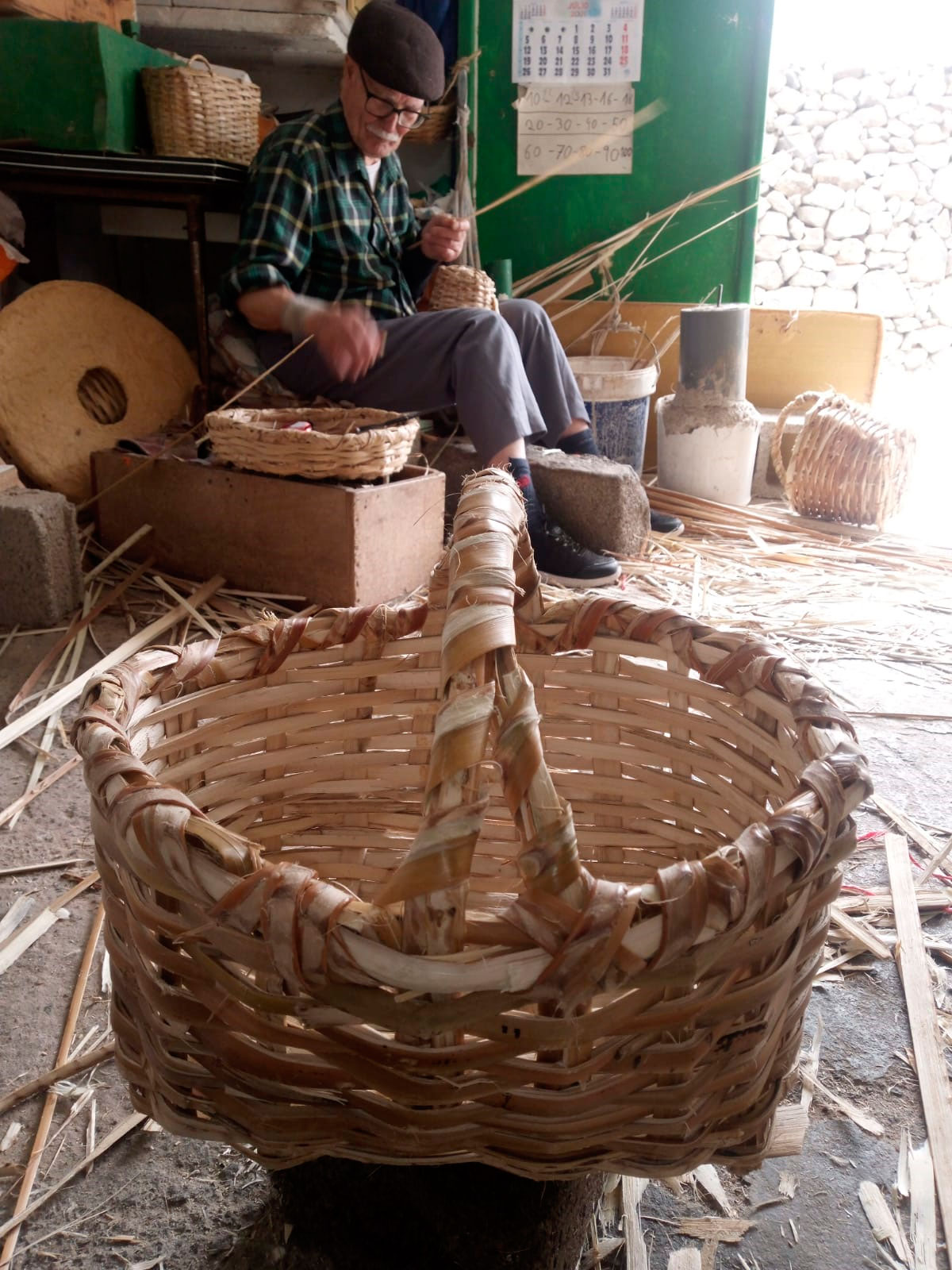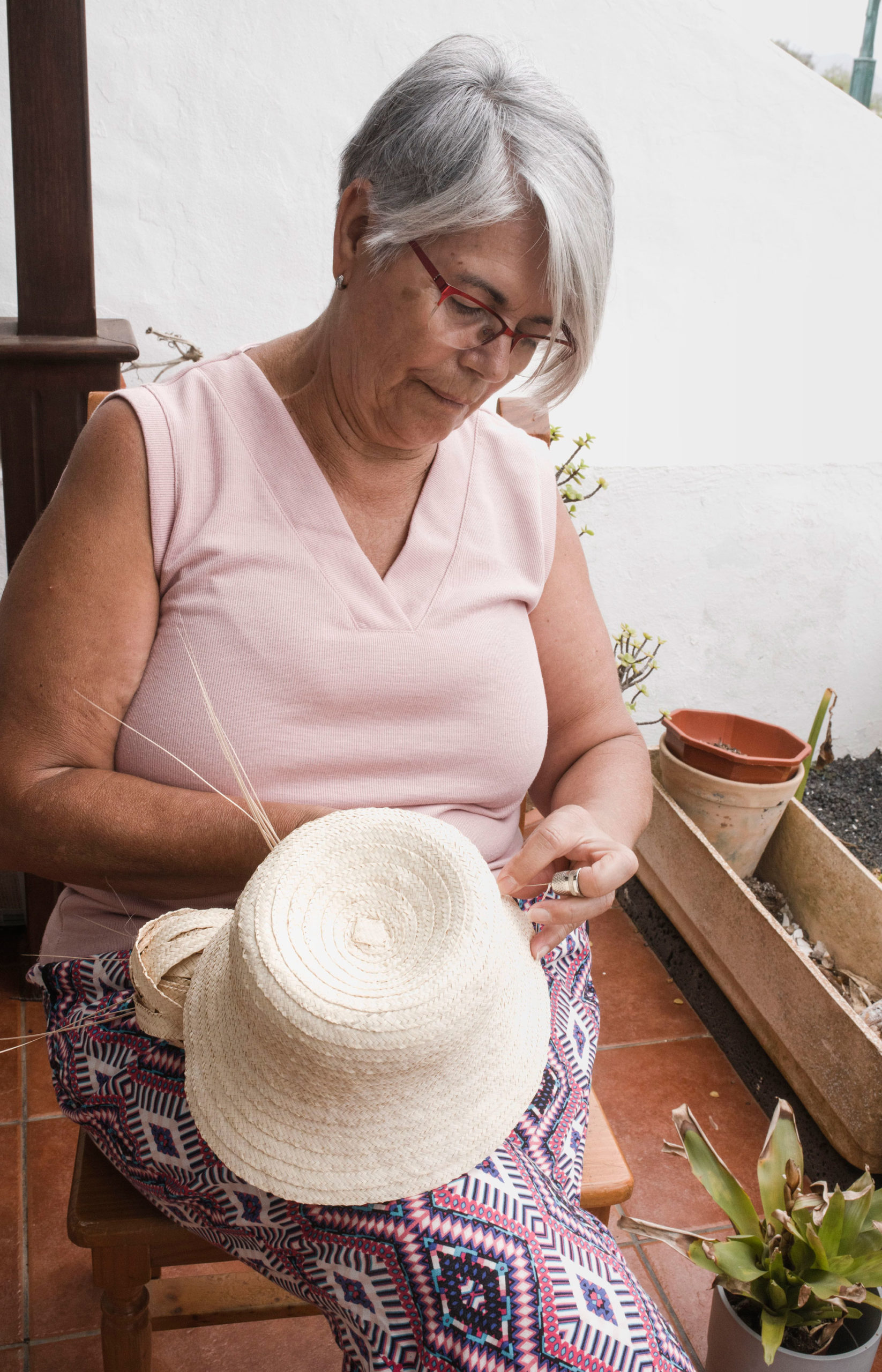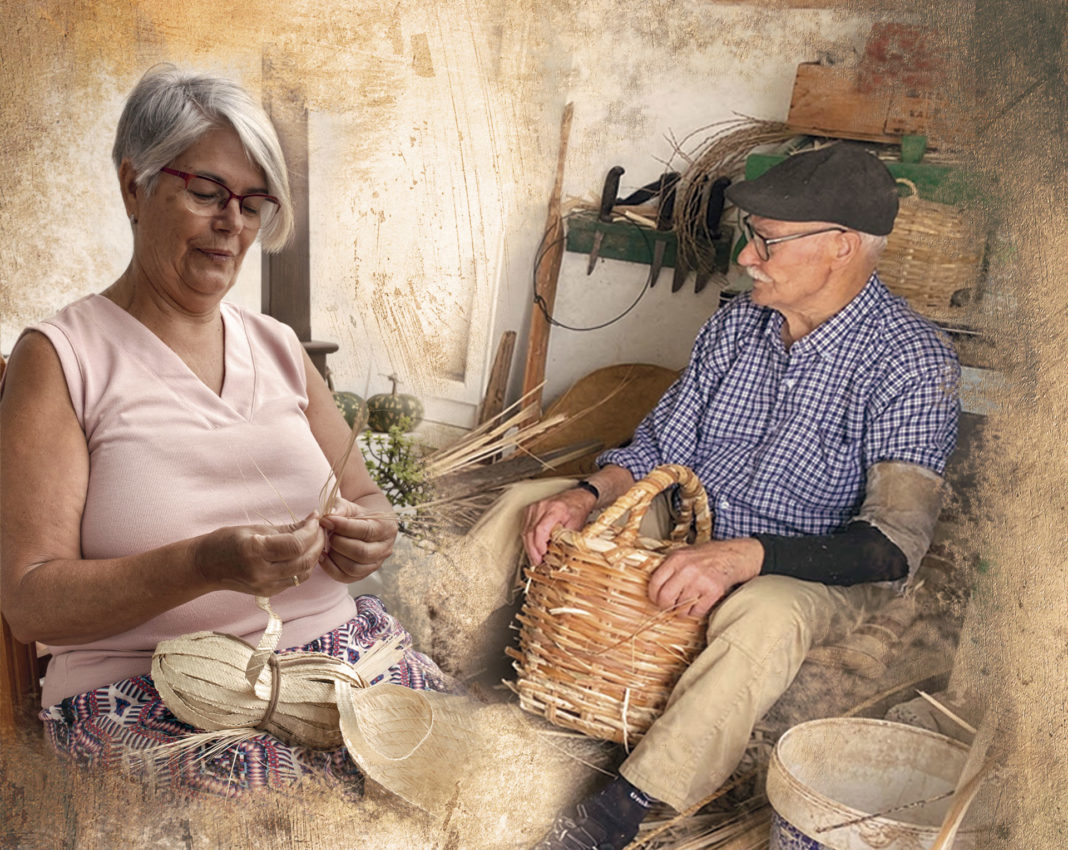Local authorities are offering a number of courses on traditional crafts in a bid to save traditional handicrafts such as basketry, pottery and palm leaf weaving
Twenty years ago, Eulogio Concepción was the last palm leaf weaver and basket maker in Lanzarote. His craft is hard work, raw materials are scarce and his baskets have become souvenirs. His children had no interest in following in his footsteps and his master craftsmanship looked destined to disappear. Until a year ago that is, when Eulogio, now eighty-nine years old, met thirty-nine-year old Ruymán de León, who has become his devoted disciple.
“Family connections in Los Valles brought us together. Eulogio passes on his knowledge to me and, in return, I do the work that the master finds hard, such as preparing the leafstalk or dealing with paperwork and bureaucracy”, explains Ruymán. By becoming Eulogio 2.0, Ruymán has assured palm basketry a future for a few more decades in Lanzarote.

Other, less vulnerable traditional techniques, like ceramics, pottery, tannery, and lace rosetas are being passed down through workshops run by the Island Council (Cabildo) as part of the Canarian government’s scheme; ‘Support for the Revitalisation and Development of the Craft Sector 2020’.
Various local councils are on board, supporting the island’s intangible cultural heritage. In March, San Bartolomé started courses in macramé, palm leaf weaving (empleita) and lacework (rosetas), bringing them into the twenty-first century. Teguise council’s Sergio Niz points out, “For at least thirty years, Teguise’s Cultural Plan has been offering handicraft workshops such as timple making, traditional costume making, ceramics, empleita, rosetas and embroidery, which have proven very popular. This year we have two hundred and twenty students.”
Cira García Perdomo, one of the empleita teachers and former student of Doña Hortensia Pérez, from Los Valles, explains, “I’ve been making them for ten years and giving courses for six. This year I have thirty-six students.”

“Nowadays,” says Cira, “most of the items, such as hats, bags and purses are sold to tourists as souvenirs, whereas in the past, we used palm leaf weaving as a tool to make backpacks for collecting salt and for making floor mats. She adds, “I teach my students not only how to weave with the leaves but also how to make these and many other objects.”



